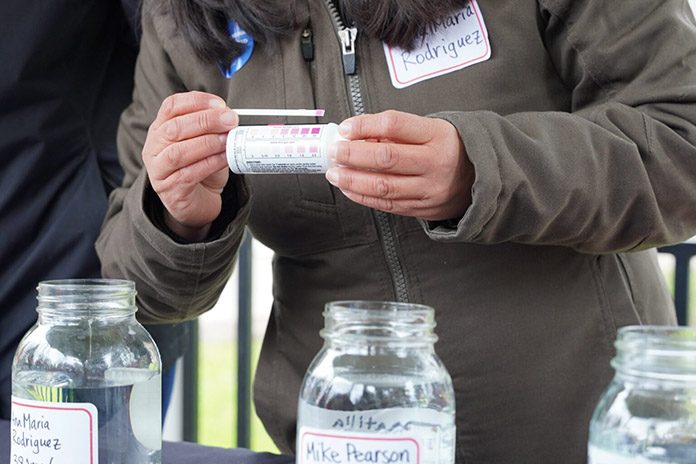
By Antonia Sierra/OBP
Two months after her return visit to the Lower Umatilla Basin, Gov. Tina Kotek has released goals on how the state can better help residents hurt by the ongoing nitrates crisis.
Kotek detailed her new plans in a Friday letter to Oregon Rural Action after the La Grande-based nonprofit led a coalition demanding the state government do more to test wells for nitrates and connect residents with clean drinking water.
Kotek wrote that she was directing the Oregon Health Authority to hit a number of new benchmarks, including:
- Publishing a web map presenting well test results by July 31
- Surveying all households receiving water deliveries by Sept. 20 to “confirm their needs are being met”
- Completing testing of 30% of the wells that remain untested by June 30, 2025 “with the understanding that well testing is not compulsory”
The letter also set 2024 and 2025 deadlines to send out additional at-home test strips, retest homes at risk of going above federal nitrate limits and address the backlog of homes that need water filters.
In a Monday statement from Oregon Rural Action executive director Kristin Ostrom, the group remained critical of the state’s efforts.
“To date, the state has taken no substantive action to rein in the sources of pollution,” she said. “It has allowed the contamination to get worse with relative impunity. There is no indication in the governor’s letter that this will change.”
Nitrate pollution in the Lower Umatilla Basin has been a documented problem for more than 30 years. The chemical can cause cancer and other illnesses if consumed in high quantities, and the state has identified irrigated agriculture as one of the largest sources of it. While municipal drinking water systems are regulated to protect against nitrates and other harmful chemicals, there aren’t any protections for domestic drinking water wells.
Kotek promised “a new day” when she made her first trip to the basin in May 2023. When she returned to eastern Oregon in April with U.S. Environmental Protection Agency regional administrator Casey Sixkiller, she received a mixed reception.
After her first visit, the state contracted with several organizations to do community outreach as the state attempted to test every well in the Lower Umatilla Basin for nitrates. Representatives from those organizations used Kotek’s most recent visit to share their frustrations over the slow pace of testing, insufficient outreach material and the general feeling that little had changed in the past year.
Oregon Rural Action, one of the organizations hired to do outreach, followed up on those criticisms in a letter to Kotek in May. ORA’s letter was cosigned by more than two dozen other organizations, including statewide groups and organizations based well outside the region, like the Oregon League of Conservation Voters.
Oregon Rural Action reported that some residents had not received their nitrate test results seven to nine months after the test was conducted. Those delays included cases where authorities told a resident the water was safe to drink only to find out later that their water was well above federal safety limits.
“The State of Oregon has not responded to this public health crisis with the urgency or seriousness it requires, and it is clear that nothing short of direct intervention by either the Governor or the U.S. Environmental Protection Agency will be sufficient to protect the residents of the Lower Umatilla Basin from experiencing further harm,” the letter states. “Greater action must be taken.”
Oregon Rural Action’s letter included several recommendations for improving the testing process, like an “opt out” system where every well is tested unless the owner explicitly instructs the state not to. The group also made its own proposals to “rein in pollution,” including setting enforceable nitrate pollution standards and requiring the sources of nitrate pollution to assume some of the financial costs of protecting the health of basin residents.
Kotek mostly avoided addressing Oregon Rural Action’s recommendations directly in her letter, but she did mention that state agencies and the EPA are working on a “comprehensive state plan” focused on nitrate pollution.
The state adopted an action plan to lower nitrates levels in the basin in 2020, but it’s mostly unimplemented. Kotek wrote that this new document would incorporate parts of the previous action plan.
The new state plan is set to be released “later this summer,” according to the governor.
This story was originally published by Oregon Public Broadcasting, an Oregon Capital Chronicle news partner.










